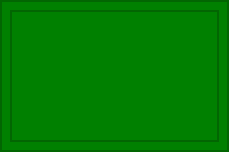4th Canadian Armoured Division
| 4th Canadian Division 4th Canadian Infantry Division 4th Canadian (Armoured) Division |
|
|---|---|

4th Canadian Division formation patch
|
|
| Active | 1916–1919 1940–1946 2013–present |
| Country |
|
| Allegiance | |
| Branch |
|
| Type |
Infantry Armoured |
| Size | Division |
| Engagements |
Battle of Normandy Battle of the Scheldt |
| Commanders | |
| Notable commanders |
David Watson George Kitching Chris Vokes |
The 4th Canadian Division is a formation of the Canadian Army. The division was first created as a formation of the Canadian Corps during the First World War. During the Second World War the division was reactivated as the 4th Canadian Infantry Division in 1941 and then converted to armour and redesignated as the 4th Canadian (Armoured) Division. Beginning in 1916 the division adopted a distinctive green-coloured formation patch as its insignia. In 2013 it was announced that Land Force Central Area would be redesignated 4th Canadian Division. It is currently responsible for Canadian Army operations in the Canadian province of Ontario and is headquartered at Denison Armoury.
The 4th Canadian Division was formed in the Britain in April 1916 from several existing units and others scheduled to arrive shortly thereafter. Under the command of Major-General David Watson, the Division embarked for France in August of that year where they served both in the Western Front in France and in Flanders until Armistice Day. The 4th Canadian Division was a part of the Canadian Corps in the Battle of Vimy Ridge, which attacked and defeated the Germans, driving them from the ridge. As a result, the Canadians became known as masters of offensive warfare and an elite fighting force.
In the Battle of Vimy Ridge in April 1917, the 4th Canadian Division was given the job of capturing Hill 145, the highest and most important feature of Vimy Ridge. However, when they attempted to capture the hill, they were hampered by fire from the "Pimple", which was the other prominent height at Vimy Ridge. To capture Hill 145, forces which were supposed to attack the Pimple were redeployed and captured Hill 145.
...
Wikipedia
